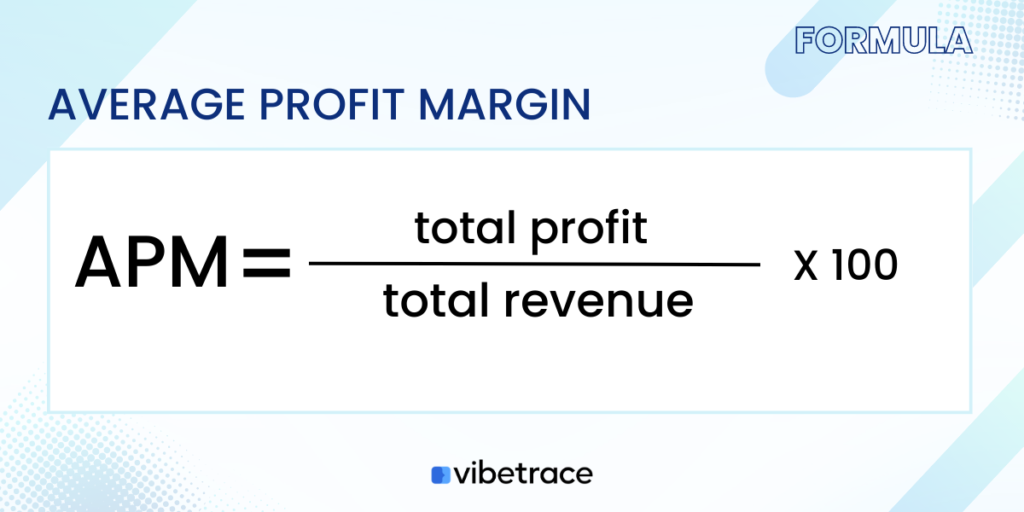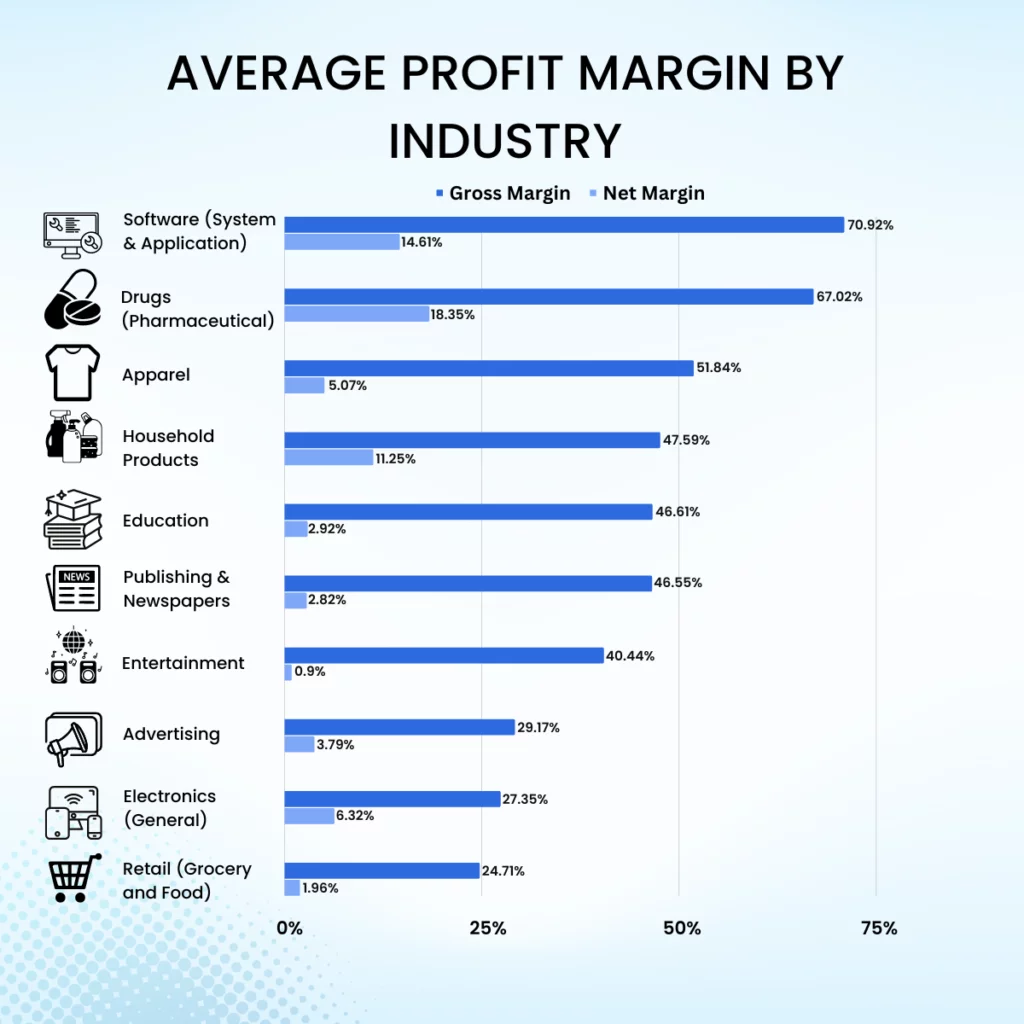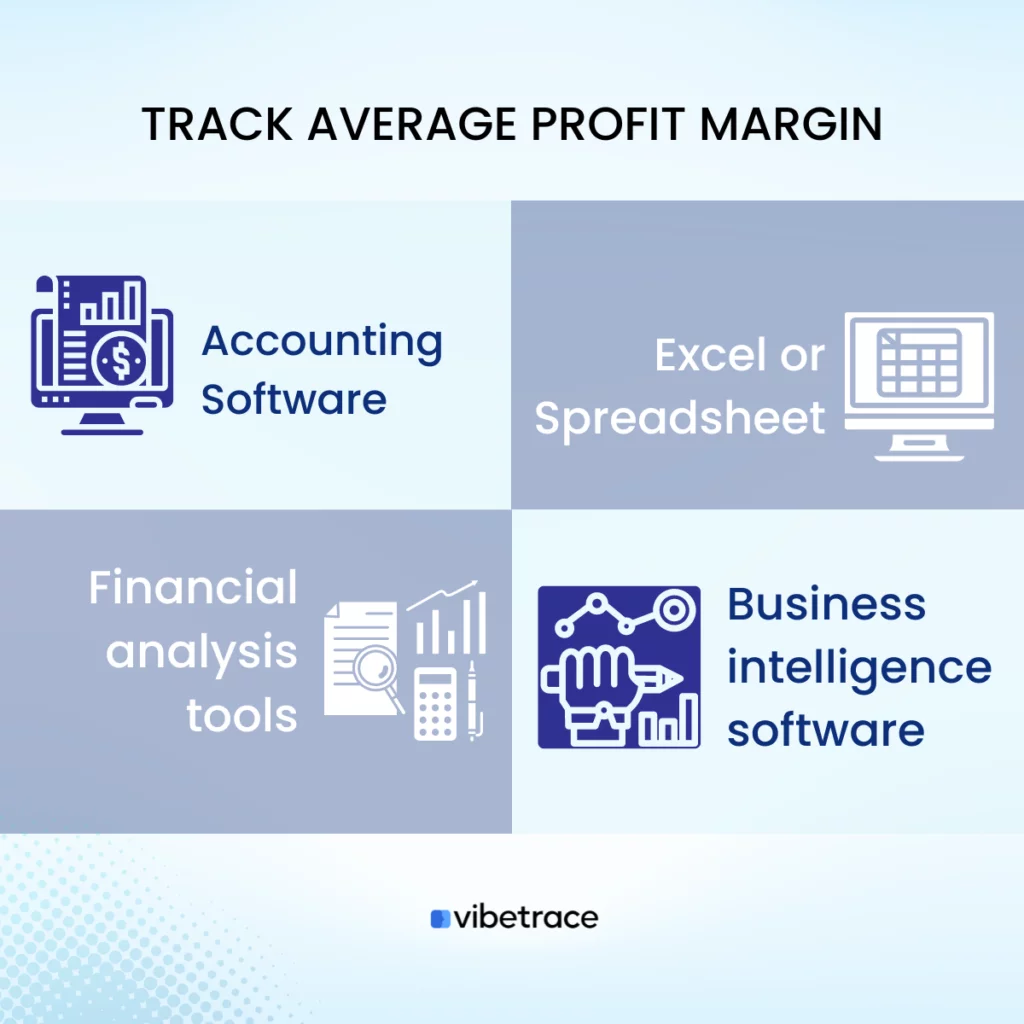Average profit margin is a metric that shows the result of business activity for several years.
As a business owner, you cannot really get away with tracking the finances of your business which is quite hard to analyze if you are not aware of the costs and revenues of your operations.
Although, upon knowing these figures, you can be able to identify your average profit margin easily.
This is important due to the fact that it would be useless to run a business for years without any growth and improvement.
With an understanding of the figures of your profit margin, you can easily make informed decisions on how to apply changes to keep your business growing.
What is Average Profit Margin?
Definition of Average Profit Margin
Average profit margin is a financial ratio that is used to measure a company’s profitability. It represents the percentage of revenue that remains as profit after all the expenses have been paid.
The average profit margin can be used to compare the profitability of different companies in the same industry or to track a company’s profitability over time.
It is also used by investors and analysts to evaluate a company’s financial health and potential for growth.
A higher average profit margin generally indicates better financial performance, while a lower average profit margin may suggest that a company is struggling to generate profits.
Average Profit Margin Formula

To calculate the average profit margin, you divide the total profit by the total revenue and then multiply by 100 to express it as a percentage.
The resulting number represents the percentage of revenue that the company earns as profit after all expenses are paid.
Average Profit Margin by Industry

| Gross Margin | Net Margin | |
| Software (System & Application) | 70.92% | 14.61% |
| Drugs (Pharmaceutical) | 67.02% | 18.35% |
| Apparel | 51.84% | 5.07% |
| Household Products | 47.59% | 11.25% |
| Education | 46.61% | 2.92% |
| Publishing & Newspapers | 46.55% | 2.82% |
| Entertainment | 40.44% | 0.90% |
| Advertising | 29.17% | 3.79% |
| Electronics (General) | 27.35% | 6.32% |
| Retail (Grocery and Food) | 24.71% | 1.96% |
The latest data on the average profit margin as of January 2023 includes gross margin and net margin for several industries, including software, pharmaceuticals, apparel, household products, education, publishing, entertainment, advertising, electronics, and retail (grocery and food).
The software industry had the highest gross margin, with an average of 70.92%, while the pharmaceutical industry had the highest net margin, with an average of 18.35%.
On the other hand, the retail (grocery and food) industry had the lowest net margin, with an average of 1.96%.
Other industries, such as apparel and electronics, had moderate average profit margins.
As a business owner, you can use this data as a benchmark to compare your profit margins to others in your industry and to make informed decisions about pricing, costs, and business strategy.
Profit margins can vary depending on a variety of factors, including location, business size, and other factors, and these statistics may not be indicative of every small business in a given industry.
Nonetheless, this information can be valuable for small business owners who want to better understand their profit margins.
If you haven’t seen the industry where you belong you can check here.
How to track Average Profit Margin?
There are several tools available that can help you track average profit margin:

Accounting software: Many accounting software programs, such as QuickBooks, Xero, and FreshBooks, have built-in tools for tracking profitability. These tools can automatically calculate your average profit margin based on your financial data and generate reports that provide insights into your company’s financial health.
Spreadsheets: You can use spreadsheets, such as Microsoft Excel or Google Sheets, to manually calculate and track your average profit margin. By inputting your financial data into a spreadsheet and using formulas to calculate the average profit margin, you can easily monitor changes in profitability over time.
Financial analysis tools: Financial analysis tools, such as Bloomberg Terminal, Yahoo Finance, and Seeking Alpha, can help you analyze your company’s financial performance and track your average profit margin. These tools provide real-time financial data and market insights, as well as customized reports that help you identify trends and make informed decisions.
Business intelligence software: Business intelligence software, such as Tableau and Power BI, can help you visualize your financial data and track your average profit margin in real-time. These tools provide interactive dashboards and customizable reports that make it easy to monitor changes in profitability and identify areas for improvement.
Want to be up to date with Marketing?
Subscribe to our Retail CX newsletter!

Stay connected with what’s really important to optimize your digital revenues.
By clicking the button, you accept our Terms & Conditions. Also you will need to confirm your email address.
How often should you check Average Profit Margin?
In general, it is recommended to check your average profit margin at least once a month or once a quarter.
Checking your average profit margin on a regular basis allows you to monitor your financial performance and identify any trends or changes in profitability.
Monthly: For smaller businesses or startups, checking the average profit margin on a monthly basis may be more appropriate, as it allows you to quickly identify any issues and make necessary adjustments.
Quarterly: For larger or more complex businesses, checking the average profit margin on a quarterly basis may be sufficient.
It’s also important to note that checking your average profit margin is just one aspect of monitoring your company’s financial health.
You should also regularly review other financial statements, such as the balance sheet and cash flow statement, to get a complete picture of your company’s financial performance.
Average Profit Margin Calculator
Do you want to calculate your average profit margin? Use our simple calculator below.
Simple Average Profit Margin Calculator
Important Things about Average Profit Margin
Here are some important things to know about the average profit margin:
High and low profit margin interpretation: A high-profit margin indicates that a company is generating a substantial profit relative to its revenue, while a low-profit margin suggests that a company is not as profitable.
Varies by Industry: The average profit margin varies by industry, as each industry has its own unique operating costs and pricing structures. Therefore, it is important to compare your company’s profit margin to those of its peers within the same industry.
Provides financial health performance: Analyzing a company’s profit margin over time can provide insights into its financial health and performance. If your company’s profit margin is consistently declining, it may be a sign that your business is facing operational or financial challenges.
Limited to the company’s financial status: While the average profit margin is a useful metric, it has some limitations. For example, it does not take into account a company’s capital structure or financing costs. Additionally, it does not consider non-operating items such as one-time gains or losses.
Metrics related to Average Profit Margin
There are several other metrics that are closely related to Average Profit Margin and should be considered when evaluating the performance of your business:
/reven
Return on Marketing Investment
The return on investment in a marketing or advertising campaign
Average Order Value
Revenue per Visitor
The amount of revenue generated by each visitor to the website.
Net Profit Margin
The percentage of revenue that remains after deducting all expenses, including taxes and interest. It is calculated as net profit/revenue.
Vibetrace is a marketing automation software that can help your business increase revenue and improve its average profit margin in several ways.
Vibetrace can help you improve your average profit margins by increasing revenue, reducing costs, and improving customer engagement, retention, and loyalty through personalized and automated marketing campaigns.
Sign up for our email list today and unlock the full potential of your campaigns with our cutting-edge email marketing automation platform.

